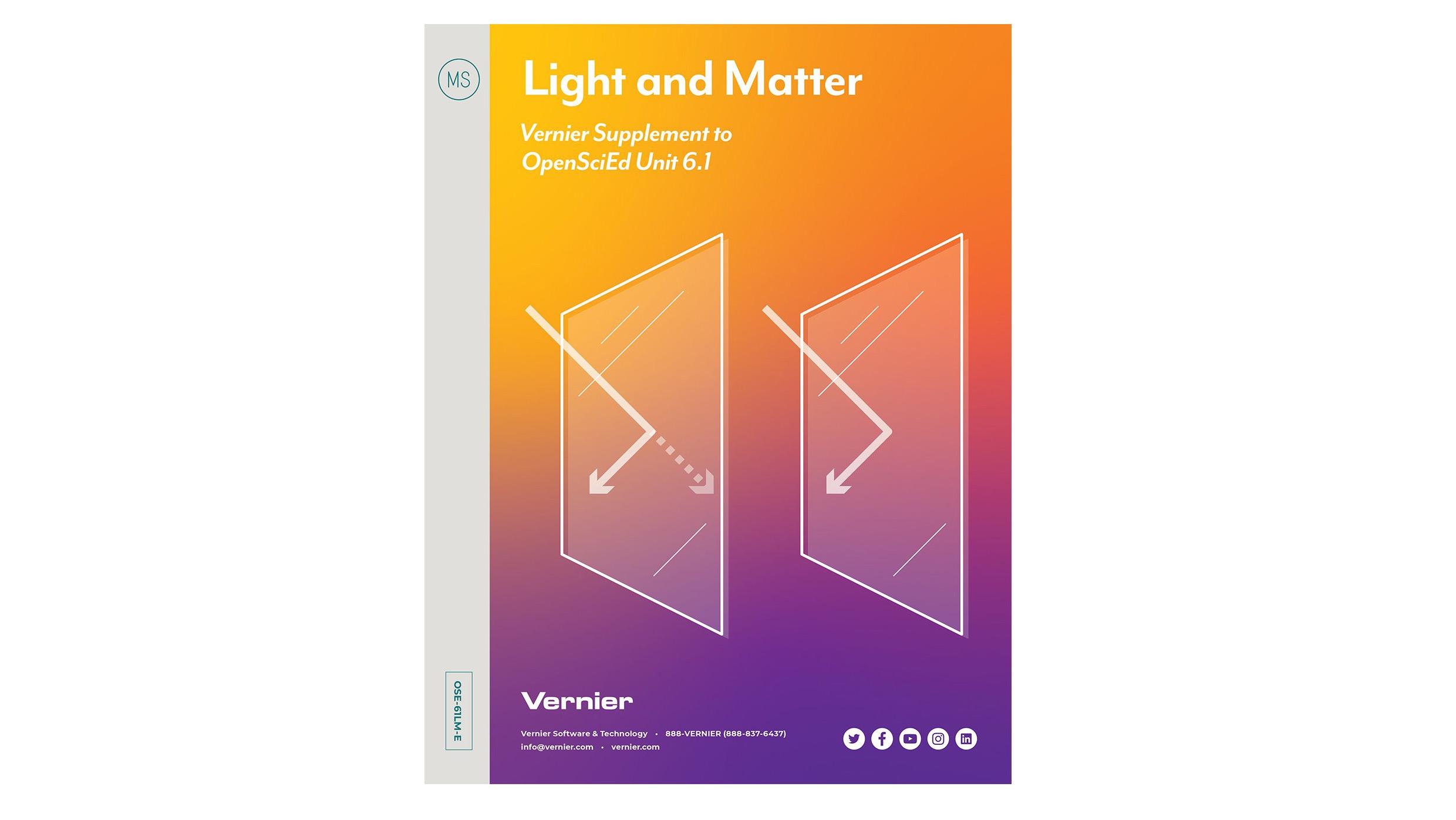Requirements
Our partnership with OpenSciEd gives middle school teachers access to free high-quality instructional materials that integrate our data-collection technology and align with the Next Generation Science Standards.
Follow the steps below to access your free PDFs and editable Google Docs for each lesson.
- Download the complete unit from OpenSciEd.
- Add the Light and Matter Supplement to your Vernier shopping cart.
- Complete the order. You will receive an email with a download link.
- Follow the link to download the Vernier Light and Matter Supplement.
- Swap in the enhanced data-collection lessons for the OpenSciEd lessons.
Lessons
There are eight lessons in OpenSciEd Unit 6.1 Light & Matter.
In the Vernier Supplement to Unit 6.1, one lesson is enhanced with Vernier data-collection technology.
This unit uses the Go Direct® Light and Color Sensor.
|
Lessons |
|
Sensors Used |
|
|
Lesson 1: How can something act like a mirror and a window at the same time? |
|
|
|
|
Lesson 2: What happens if we change the light? |
|
|
|
|
Lesson 3: What happens when light shines on the one-way mirror? |
|
Go Direct®
Light and Color Sensor
(1 per group) |
|
|
Lesson 4: How do similar amounts of light transmit through and reflect off the one-way mirror? |
|
|
|
|
Lesson 5: How do light and the one-way mirror interact to cause the one-way mirror phenomenon? |
|
|
|
|
Lesson 6: Why does the music student not see the adults? |
|
|
|
|
Lesson 7: Why do the music student and the adults see the music student but the music student can’t see the adults? |
|
|
|
|
Lesson 8: Why do we sometimes see different things when looking at the same object? |
|
|
|

